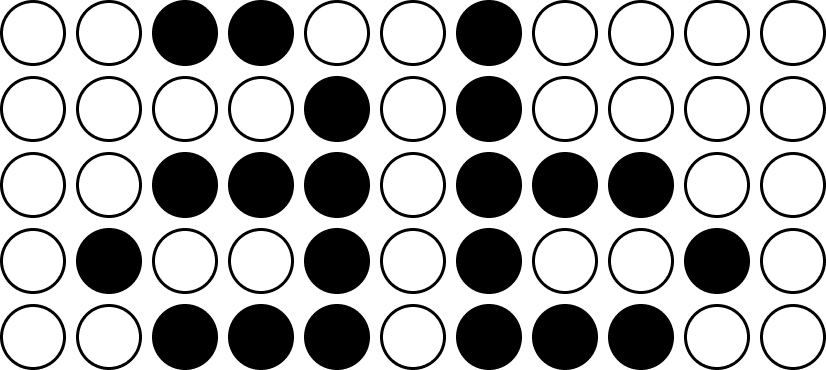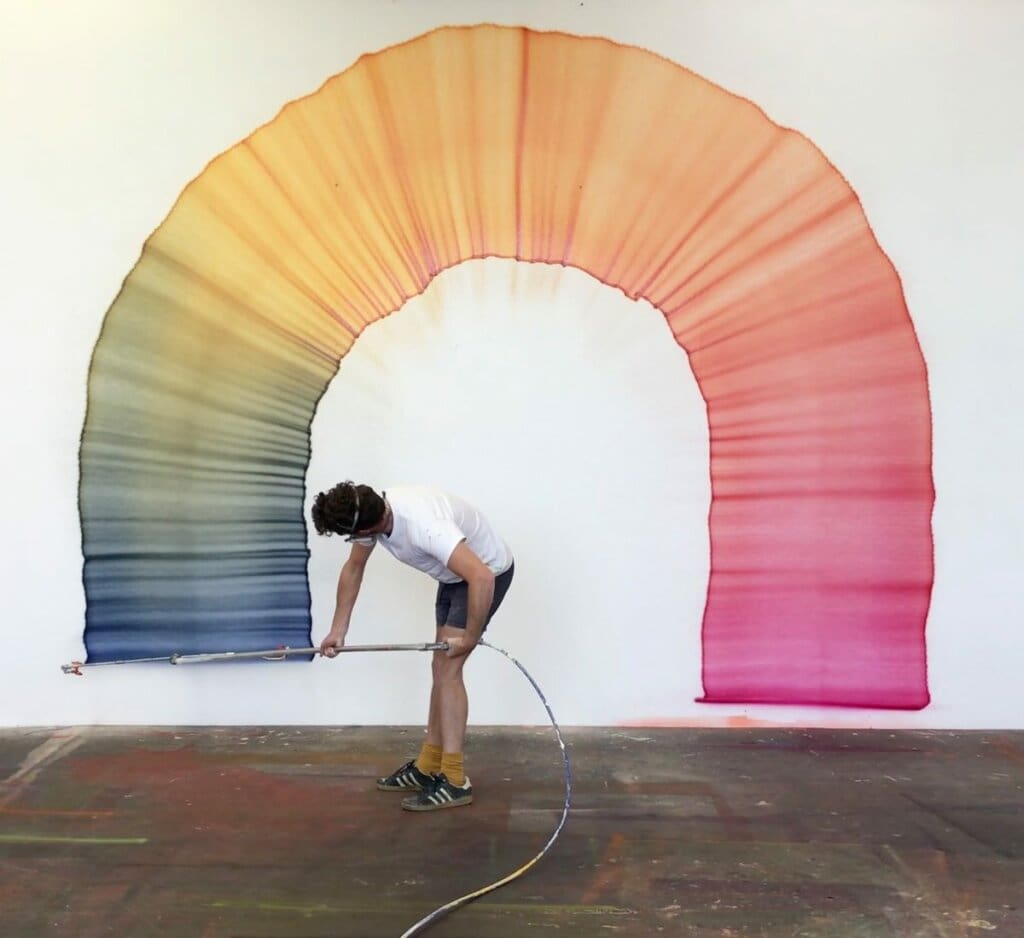As a designer I love printing devices, especially 2D printing devices.
I want to create a printer to make murals or big canvases with type design work. This is obviously not a new type of machine, or as Neil put it, Ancient HistoryTM. However, I believe there are a lot of unexplored creative solutions that might not be groundbreaking technologically, but definitely can be artistically. I like this messy space between art and machines and want to explore it further.

The initil idea is to somehow measure the distance the device moves, and to draw a string of text with a pixel-based modular font. This water printing machine by Chrs D'Annunzio is a great example of such a machine.
 Chris D'Annunzio
Chris D'Annunzio
This font could be designed for a minimum of 5 vertical points. Ideally it would be a rather large printer where the 'print-head' is portable.
 Chris D'Annunzio
Chris D'Annunzio
Each of the 'columns' of this text design can be printed dependent on where the machine is relative to its starting point. This principle is used in LED displays, but can be magnified much further.
So each of this pixels in one column is basically one component. Every single component needs some form of ink supply, and an on/off switch to release the ink. Then it needs to be controlled by a central entity that tracks the progress and decodes the text in 'columns'.

In this field, a lot of work has been done. A lot of it is fairly high-end, but there are handheld printers that are really accessible. However, these do not have bright color ink.
I'm looking mostly into the way the mobile water printer works. Somehow finding this online is hard, even though I remember at some point multiple people sent me a video of the printer in action on social media.


In the end, I am not working towards making a printer that fully redefines 2D printers. My goal is to make a tool that has specific artistic qualities to make unique works.
A lot of artists and designers work with custom-made machines, and I would love to be able to develop a machine that I can make unique physical work with.
In order to define success, I want to define these qualities:
- Unique way of creating work
- Works with bright paints
- Ability to create gradients
Let's dissect the work of some artists and designers that have developed such tools:






The water printer example made by Chris D'Annunzio shows some logic to this, albeit in a much higher resolution.

The elements that for one component one might need are as follows:
- Ink supply: Rubber water tube $2,00
- on/off switch: solenoid $7,50
- Nozzle: 3d printed custom part $0,50
- Connector wires: $3,00
That of course gets multiplied at least 5 times, plus additional costs for the structure on which it is built, the central PCB and the central ink supply.
The nozzle will also define the size of the surface that can be printed, so that will require some more detailed investigation.

The whole machine would roughly look like this, a giant paint brush with at least five ink-release components. The next challenge will be to build with components developed in this course.